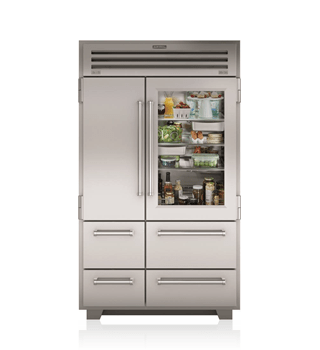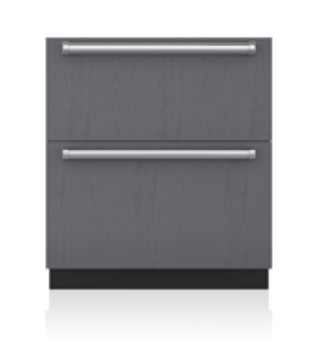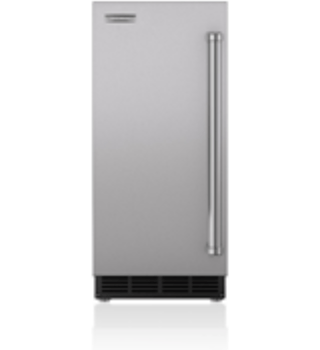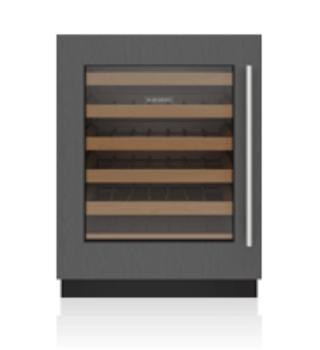How To Use Sub-Zero Synthetic Refrigerant: A Complete Guide
Sub-Zero refrigerators are renowned for their advanced technology and long-lasting performance, and one crucial element that contributes to their efficiency is the refrigerant. Sub-Zero uses synthetic refrigerants in many of their models, offering superior cooling capabilities while being environmentally friendly. In this article, we’ll guide you on how to properly use Sub-Zero synthetic refrigerant, including tips on handling, safety precautions, and maintenance. If you’re in need of professional help, be sure to visit our Sub-Zero refrigerator repair page for expert service.
What Is Synthetic Refrigerant in Sub-Zero Refrigerators?
Synthetic refrigerant is a man-made chemical compound that is used to cool the air inside refrigerators and freezers. It works by circulating through the evaporator coils, absorbing heat from inside the appliance and releasing it outside, thus cooling the interior. Sub-Zero uses synthetic refrigerants like R-134a and R-600a in their refrigerators to provide efficient cooling while minimizing environmental impact. These refrigerants are designed to be more energy-efficient and eco-friendly compared to traditional refrigerants, helping maintain the high-performance standards Sub-Zero is known for.
If you’re unsure about the specific refrigerant used in your Sub-Zero model, check the owner’s manual or visit Sub-Zero’s official website for detailed specifications. You can also refer to other industry resources like the EPA’s refrigerant guidelines to learn more about refrigerants and their environmental impact.
Why Use Synthetic Refrigerant in Sub-Zero Refrigerators?
Synthetic refrigerants offer several key benefits, making them a top choice for premium refrigerator brands like Sub-Zero:
- Environmental Benefits: Synthetic refrigerants, like R-134a, are less harmful to the environment than older refrigerants like R-12. They have a lower ozone depletion potential (ODP) and are generally safer for the environment. For more information on the environmental benefits of these refrigerants, check out the NRDC’s insights on refrigerants.
- Energy Efficiency: Synthetic refrigerants provide superior energy efficiency, which can help reduce energy consumption while maintaining optimal cooling performance.
- Reliability: Sub-Zero’s synthetic refrigerants are designed to work efficiently across a wide range of temperatures, ensuring that your refrigerator performs optimally in various conditions.
How To Properly Use Sub-Zero Synthetic Refrigerant
Using synthetic refrigerant properly ensures that your Sub-Zero refrigerator continues to operate at peak performance. Here are the key steps to handle and use synthetic refrigerant correctly:
1. Check the Refrigerant Levels
Before using any refrigerant, it’s crucial to check the refrigerant levels in your Sub-Zero refrigerator. Low refrigerant levels can lead to poor cooling performance and could damage your appliance. If the refrigerant level is too low, it’s important to replenish it with the correct type of synthetic refrigerant for your model. For best results, always use Sub-Zero-approved refrigerants, such as R-134a or R-600a, which are designed to work optimally with Sub-Zero systems. You can learn more about refrigerant usage in refrigerators from the HVAC.com’s guide to refrigerants.
2. Ensure Proper Handling of Synthetic Refrigerant
Handling refrigerants requires care, as they can be hazardous if not managed properly. Always wear protective gloves and goggles when working with refrigerants, and ensure you’re in a well-ventilated area. Refrigerants should only be handled by certified professionals who are knowledgeable about the specific type used in Sub-Zero refrigerators. If you’re not experienced in dealing with refrigerants, it’s recommended to call a professional technician to handle the refrigerant replacement or repair process. You can check the OSHA guidelines for handling refrigerants safely.
3. Monitor Temperature Settings
Sub-Zero refrigerators are designed to maintain optimal temperature conditions for the synthetic refrigerant to work efficiently. Set your refrigerator to the recommended temperature settings (usually around 37°F for the fridge and 0°F for the freezer). If the temperature is too low or too high, the refrigerant may not work properly, leading to inefficient cooling. It’s important to follow Sub-Zero’s temperature guidelines to ensure that the refrigerant operates at its best capacity. Additionally, the Energy Star program offers energy-saving tips and guidelines that help optimize refrigerator performance.
4. Avoid Overcharging the System
Overcharging a refrigeration system with too much refrigerant can lead to a range of issues, including compressor damage, system inefficiency, and increased energy consumption. When adding synthetic refrigerant, it’s important to charge the system to the manufacturer’s recommended levels. Overcharging or undercharging can cause the refrigerator to malfunction or lead to long-term damage. The HVAC.com’s guide to refrigerant charging provides valuable information on this process.
5. Regularly Inspect the System for Leaks
Leaks are a common issue with refrigeration systems, and they can cause a loss of refrigerant. A refrigerant leak can result in inefficient cooling and increased energy usage. If you notice that your Sub-Zero refrigerator is not cooling properly, or if the temperature fluctuates unexpectedly, it’s important to check for leaks. Using a leak detection system or consulting with a professional technician can help you find and repair any refrigerant leaks. Learn more about leak detection from ACHR News for in-depth techniques.
When to Call a Professional for Sub-Zero Refrigerant Issues
While maintaining your Sub-Zero refrigerator’s refrigerant system is possible, there are times when professional help is needed. Here are a few scenarios where you should contact a technician:
- Refrigerant Leaks: If you notice any refrigerant leaks or a significant drop in cooling efficiency, it’s crucial to have a professional technician repair the leak and recharge the system with the proper refrigerant.
- Inconsistent Cooling: If your refrigerator is not maintaining the set temperature despite regular maintenance, it may be a sign of an issue with the refrigerant system. A technician can diagnose and repair the issue.
- Refrigerant Replacement: When replacing refrigerant, it’s important to use the correct type for your model. A professional technician will know which refrigerant is suitable and ensure it’s safely added to the system.
- Annual Inspections: Scheduling an annual inspection with a certified technician can help prevent future issues. Regular check-ups ensure that your Sub-Zero refrigerator remains in top working condition.
Final Thoughts
Using Sub-Zero synthetic refrigerant correctly is vital to maintaining the efficiency and longevity of your appliance. By regularly checking refrigerant levels, ensuring proper handling, and monitoring the system for leaks, you can ensure your Sub-Zero refrigerator continues to perform at its best. However, if you ever encounter issues or need to replace the refrigerant, it’s always best to consult a certified technician. For professional Sub-Zero refrigerator repair services, visit Fix Sub Zero Refrigerator.
Frequently Asked Questions (FAQs)
1. Can I recharge my Sub-Zero refrigerator’s refrigerant myself?
It is not recommended to recharge refrigerant yourself unless you are a certified professional. Handling refrigerants requires expertise to ensure safe and proper usage. Always consult a technician for refrigerant-related repairs or replacements.
2. What should I do if I notice my Sub-Zero refrigerator isn’t cooling properly?
If your Sub-Zero refrigerator is not cooling as expected, it could be due to low refrigerant levels, a leak, or another mechanical issue. Contact a professional technician for a thorough inspection and repair.
3. How can I tell if my Sub-Zero refrigerator has a refrigerant leak?
Signs of a refrigerant leak include inconsistent cooling, frost buildup in unexpected areas, or higher-than-normal energy bills. If you notice these signs, it’s important to call a technician to address the issue.
4. How often should I have my Sub-Zero refrigerator’s refrigerant checked?
Sub-Zero refrigerators generally don’t require frequent refrigerant checks unless there’s a performance issue. However, it’s a good idea to have your system inspected annually as part of regular maintenance to ensure optimal performance.
5. What type of refrigerant does my Sub-Zero refrigerator use?
Sub-Zero refrigerators typically use synthetic refrigerants such as R-134a or R-600a. Check your refrigerator’s manual or visit Sub-Zero’s official website for specific refrigerant details based on your model.




